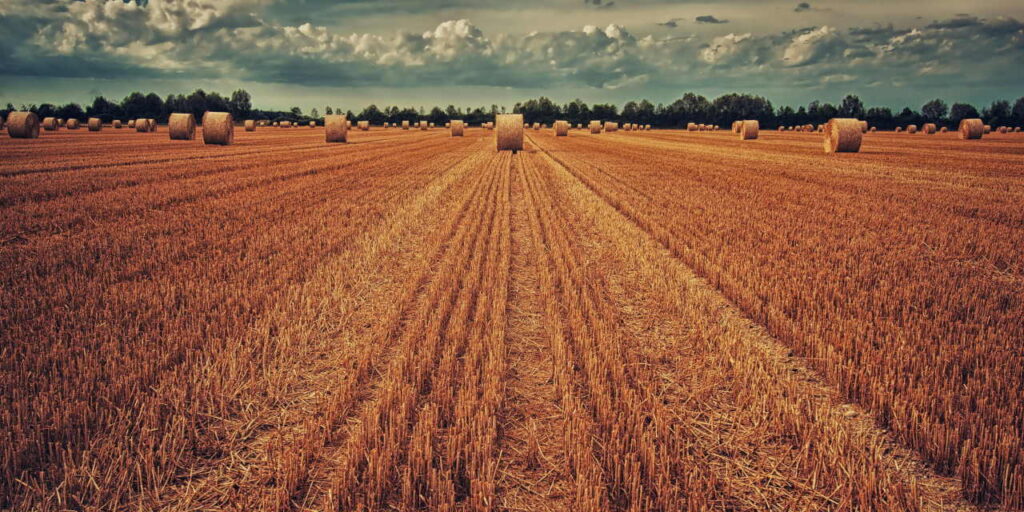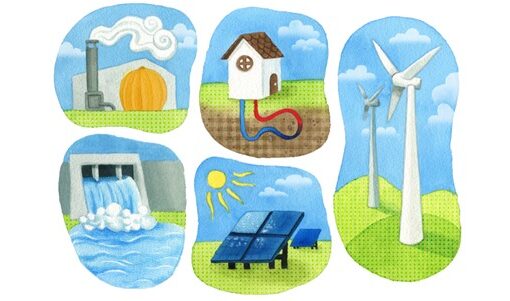The buildings and construction sector accounts for 32 percent of global energy consumption and contributes 34 percent of worldwide carbon dioxide (CO2) emissions. The sector heavily relies on materials like cement and steel, which are together responsible for 18 percent of global carbon emissions and create a lot of construction waste. (United Nations Environment Programme 2025, 13.) Using biomaterials in construction, such as hemp, straw, corn, rice, and other agricultural by-products, offer a sustainable alternative, while supporting circular bioeconomy principles. Not only are these materials biodegradable, can store carbon and support soil health, using the locally produced biomaterials reduces transportation requirements, offers local green jobs and improve indoor quality. (United Nations Environment Programme 2020, 53.)
Focusing on straw
Straw is the dry stalk left behind after harvesting cereal crops such as wheat, maize, rice, barley, oats, rye, and sorghum. Straw consists mainly of cellulose and lignin, which are also the primary components of wood. It lacks nutritional value and has traditionally been used in agriculture for animal bedding, soil enrichment, or for animal feed. In addition, straw is increasingly utilized as a renewable fuel source in biomass energy production. (Koh & Kraniotis 2020.)

Straw bale is a sustainable building material with promising thermal insulation and structural properties. To meet a passive house standard, a wall must keep heat loss very low, with a U-value no higher than 0.15 W/m²K (Passive House Institute 2024). Straw’s thermal conductivity increases with density, and a 500 mm thick wall can achieve a U-value (thermal transmittance coefficient) between 0.1 and 0.2 W/m²K. In addition, straw bale walls, especially when coated with lime or clay plaster, have demonstrated strong fire resistance in various tests, often exceeding local building code requirements (Koh & Kraniotis 2020.)
Designed by Nature – Case EcoCocon
In March 2025, Zuzana Kierulfová, EcoCocon Training Specialist, presented the benefits of the prefabricated straw panels during the 5th CITISYSTEM interregional event held in Košice, Slovakia. These modular panels are composed of 98 percent natural, renewable materials, providing healthy indoor microclimate with stable temperatures, while providing high-level performance. When combining with insulated wood fibre board of 60–140 mm, straw bale walls can achieve the U-values of 0.131–0.109 W/m²K. Their system combines the timber-straw panel finished with a base clay coat and fine clay plaster on the interior, with an airtight breather membrane, insulating fibre board and ventilated façade on the exterior. Straw’s natural fire resistance is enhanced by its silica content (around 4 percent), which acts as a flame retardant. Its compressed form limits airflow and forms a protective carbonized layer during burning. Also, it poses unique sound-absorption properties. (Kierulfová 2025.)
However, challenges like public perception and land use competition still limit straw for widespread use in the built environment (Kierulfová 2025; United Nations Environment Programme 2020). Kierulfová (2025) argued that using just 3 percent of EU straw production for constructions could yield around 100 million square meters of straw bale walls, which would allow approximately 700 000 homes to be built per year.
In conclusion, using straw as a building material is not only practical but also beneficial for the environment. It helps store carbon instead of releasing it and reduces the need for the conventional materials that take a lot of energy to produce. When a straw wall reaches the end of its life, it can be composted instead of thrown away. This makes straw a perfect fit for the circular bioeconomy, where resources are reused, circulated and waste is minimized. That’s exactly the kind of thinking supported by the CITISYSTEM project, which aims to support cities in sustainable biobased systemic change.
Link to the CITISYSTEM website
Author
Katerina Medkova works as an RDI Specialist at LAB University of Applied Sciences and is the CITISYSTEM Project Manager. CITISYSTEM – Supporting cities in sustainable biobased systemic change is an Interreg Europe co-funded project led by LAB University of Applied Sciences, Finland. The CITISYSTEM partnership consists of seven partners from Finland (2 partners), Slovakia, Slovenia, Belgium, Greece, and Spain.

References
Kierulfová, Z. 2025. Prefabricated Straw Panels. Presentation given at CITISYSTEM Interregional Event. Košice, Slovakia. March 2025.
Koh, C. H. A. & Kraniotis, D. 2020. A review of material properties and performance of straw bale as building material. Construction & building materials. Vol. 259, 120385. Cited 29 May 2025. Available at https://doi.org/10.1016/j.conbuildmat.2020.120385
Passive House Institute. 2024. Passive House requirements. Cited 29 May 2025. Available at https://passiv.de/en/02_informations/02_passive-house-requirements/02_passive-house-requirements.htm
Plenio, J. 2013. brown-field-1146717/. Pexels. Cited 29 May 2025. Available at https://www.pexels.com/photo/brown-field-1146717/
United Nations Environment Programme. 2020. 2020 Global Status Report for Buildings and Construction: Towards a Zero-emission, Efficient and Resilient Buildings and Construction Sector. Nairobi: United Nations Environment Programme. Cited 26 May 2025. Available at https://globalabc.org/sites/default/files/inline-files/2020%20Buildings%20GSR_FULL%20REPORT.pdf
United Nations Environment Programme. 2025. Global Status Report for Buildings and Construction 2024/2025: Not just another brick in the wall. The solutions exist. Scaling them will build on progress and cut emissions fast. Paris: United Nations Environment Programme. Cited 26 May 2025. Available at https://doi.org/10.59117/20.500.11822/47214
Links
Link 1. Interreg Europe. 2025. Project Summary. CITISYSTEM. Cited 26 May 2025. Available at https://www.interregeurope.eu/citisystem




